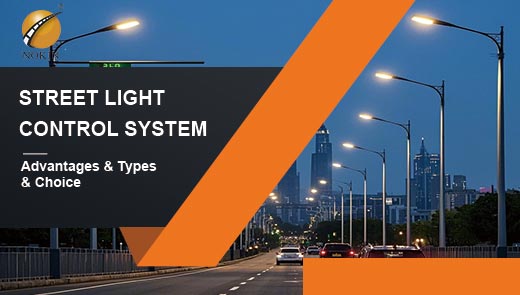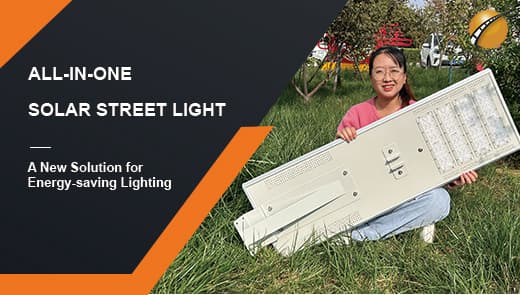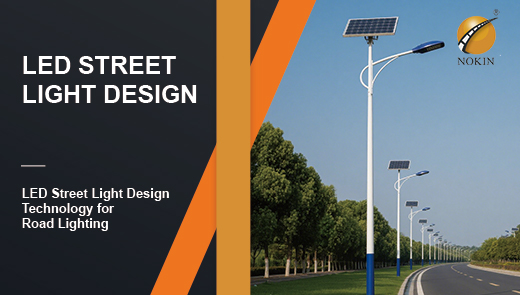How much does a solar street light cost?
Under the background of the global active promotion of sustainable energy development, solar street light, as an important representative of green lighting, is rapidly occupying the streets and alleys of cities and villages. However, for municipal departments, enterprises or individuals who are interested in adopting solar street lights, “how much does a Solar street light cost” is always a core issue of great concern. In this article, we will analyze the cost of solar street light, compare the cost difference with traditional street light, and explain its significant advantages, to provide a comprehensive reference for your decision-making.
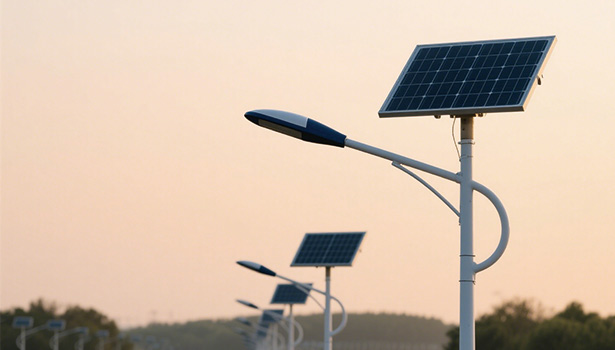
What are solar street lights and how do they work?
Solar street light is a new type of outdoor lighting equipment that integrates light - electricity conversion, energy storage and intelligent control technology. With clean and renewable solar energy as the core energy source, it gets rid of the dependence on the power grid, and becomes the preferred solution for urban and rural lighting upgrading. Its workflow contains four major links: first, the top of the solar panel using a special coating technology to absorb sunlight, through the photoelectric effect will be converted into electricity, monocrystalline silicon panels conversion efficiency of up to 20% - 25%, polycrystalline silicon for 15% - 19%.
Secondly, the electricity is transferred to the battery for storage, common lead-acid, colloidal, lithium batteries have their own advantages and disadvantages, the battery will automatically control the charging according to the light and time. Then, when night falls, light sensors to monitor light intensity, below the threshold will trigger the controller to release the battery power to light up the LED lamps, some high-end products can also be based on the flow of intelligent dimming. Finally, the control system as the “brain”, with over-charging, over-discharging, short-circuit protection, advanced systems also support remote monitoring and parameter adjustment.
With the development of technology, solar street lights continue to revolutionize. The research and development of new materials for battery panels improves the conversion efficiency, and the breakthroughs of LED lamps in encapsulation and heat dissipation technology prolongs the life and reduces the light decay, and the new energy storage technology also guarantees its stable lighting under complicated weather, which promotes the solar street light to move forward in the direction of high efficiency and intelligence.
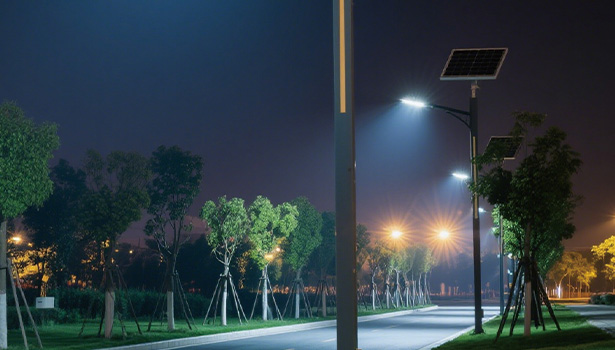
What factors affect the price of solar street lights?
Street light shell
As the key protection component of solar street light, street light housing is like a solid armor, which not only bears the responsibility of protecting the core components such as internal LED chip, driver and battery, but also directly affects the service life and overall performance of the street light. In the outdoor environment, street lights need to be subjected to long-term wind, sun, rain, snow and corrosive gas erosion, so the material and process of the shell is crucial, directly related to the service life of the street light. Nowadays, the development of modern technology prompts us to generally use die-casting aluminum shell. Die casting aluminum is through high pressure aluminum alloy liquid into the mold cavity, after cooling and solidification of the material.
This process produces a shell with high density, high strength, uniform texture characteristics, can effectively resist the impact of external forces, to prevent the shell deformation damage. At the same time, aluminum itself has strong corrosion resistance, after surface treatment (such as anodic oxidation, powder coating, etc.), die-casting aluminum shell corrosion resistance is further enhanced, can be used in harsh environments for a long time stable. In addition, different appearance design needs, will lead to street light price differences. Depending on the design, some products will use die-cast aluminum, some use aluminum profiles, the amount of material used and the different processing technology, will be reflected in the price.
LED Driver
LED driver is an indispensable part of street light products, but also the key to normal light emitting lamps and lanterns. Its quality directly affects the service life of the lamps and lanterns and lighting effects. LED driver variety, from the point of view of the driver, can be divided into a driver lamps and lanterns without driver; from the brand point of view, common and commonly used brands, including Infineon (Inventronics), Mean Well (Mean Well), Dongling (Done), Sosen (Sosen), Philips (Philips) and so on. Philips, etc. According to the different needs of customers, will be matched with the corresponding LED driver solutions, which also makes the price fluctuations.
LED Chip
The quality of LED chips directly determines the luminous efficiency and service life of street lights. Generally speaking, as long as the design is reasonable, the life of the LED chip is quite long. Luminous efficiency refers to the photoelectric conversion efficiency of the LED chip (unit lm / W), the higher the luminous efficiency, the chip will be converted into light energy, the stronger the ability to enhance the luminous efficiency of the lamps and lanterns. Different types of LED chips have different luminous efficacy, the price also varies. Usually, under the same brand, the LED chip with high luminous efficiency is more expensive.LED chips can be divided into 3030, 5050, 2835, 3535, 5730, etc. (e.g., 3030 represents the chip size of 30mm x 30mm x 1.5mm).
Other Functions
Due to the differences in the level of economic development of different countries and regions, the demand for street light functions is not the same.
Street light with light control function: This kind of street light usually uses 1-10V driver or no dimming driver, with 3pin, 5pin, 7pin NEMA base and light control components, which can realize the function of automatically turning off the light during the day and lighting up the light at night, and the increase of the function will bring a certain increase of cost.
Street light with motion sensor function: generally use 0-10V driver, and equipped with special motion sensor. When pedestrians or vehicles pass by, the street lamps automatically light up, people or cars leave, the street lamps in a certain period of time automatically shut down. Such features will also increase the price of the street light.
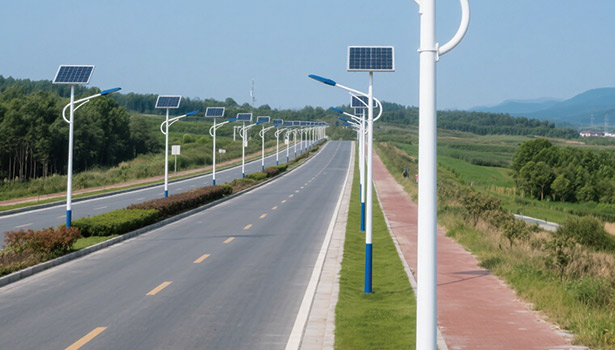
How much do solar street lights cost compared to traditional street lights?
Initial cost
The initial acquisition cost of a solar street light is usually higher. This is due to the complexity of its components, which, in addition to the lamps themselves, cover core components such as solar panels, batteries, and controllers. Solar panels need to have high photovoltaic conversion efficiency, and batteries need to meet certain energy storage requirements, and these high-quality components will increase the overall cost.
In contrast, the initial investment in traditional street lights appears low at first glance. However, its lighting needs to rely on the external power grid, the installation must be equipped with cables, transformers and other ancillary facilities, these hidden costs in the project planning stage is often easy to be ignored, in fact, will also make the overall initial investment increased a lot.
Installation cost
Solar street lights have great advantages in installation, and the installation cost is significantly lower than that of traditional street lights. Most of its components are prefabricated, users only need to use simple tools such as screws to assemble and fix the components, without the need for complex construction techniques, ordinary people can also easily complete the installation.
The installation of traditional street lights is more complicated, requiring a series of complex operations such as digging trenches, laying pipes, wiring, repairing trenches and installing transformers. It not only requires professional construction team, but also involves a lot of human and material resources, long construction period, and naturally high installation costs.
Maintenance cost
The maintenance cost of solar street light is relatively low during its service life. However, the batteries are consumables and generally need to be replaced once every 5-10 years, with an average replacement cost of up to US$1,000. In addition, solar panels need to be cleaned regularly to ensure light absorption efficiency. However, overall, due to its relatively simple structure and high stability of electronic components, the maintenance needs of other components are less, except for battery replacement and cleaning.
The bulb life of traditional street lamps is relatively short, the average service life of ordinary street lamp bulbs is only 5000 - 8000 hours, requiring frequent replacement. Moreover, the wiring and transformer components of traditional street lights are also prone to failure and require regular maintenance, resulting in higher overall maintenance costs.
Energy cost
The energy of solar street light comes from inexhaustible solar energy, and in the whole process of using, there is no need to buy electricity from the external power grid, realizing zero energy cost. In the long run, this will save users a lot of money as electricity prices fluctuate and rise. Traditional street lights, on the other hand, require constant consumption of electricity, which is paid for every month. For example, a 100-watt traditional street light that is illuminated for 10 hours a day will cost a significant amount of money over the course of a year. Moreover, as energy prices rise, the cost of electricity for traditional street lights will continue to increase.
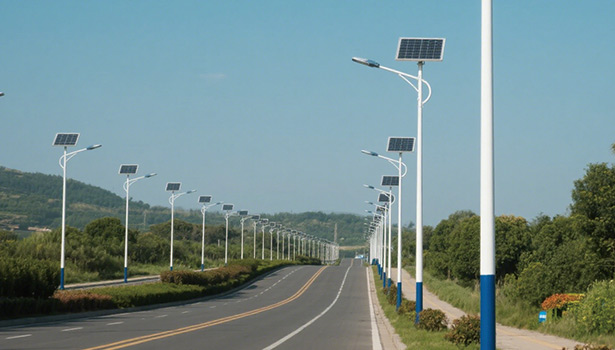
Are there any benefits to using solar street lights over traditional street lights?
Convenient installation
Solar street light adopts modular design, most of the components have been assembled before leaving the factory, when installing on-site, users only need to use screws to fix the pole, solar panel, lamps and batteries and other components for simple splicing, without complex electrical wiring and professional construction equipment. Even those who lack professional technical knowledge can easily complete the operation by referring to the installation instructions, and the whole installation process can usually be completed within 1 - 2 hours.
On the contrary, the installation process of traditional street lights is cumbersome and technically demanding. Not only need to excavate a deep trench on both sides of the road for burying cables, but also need to lay pipes to protect the line, complete the wiring to repair the trench, but also need to install transformers and other ancillary equipment. This series of operations not only requires a professional construction team, but also involves a large number of human and material resources investment, long construction period, the general installation of a single street light takes hours or even days, and the installation cost is high.
Low maintenance cost
The structure of solar street light is simple and without complicated line connection, the failure rate of core components such as LED lamps, solar panels and controllers is low. Daily maintenance mainly focuses on regular cleaning of dust and dirt on the surface of the solar panel to ensure its photoelectric conversion efficiency, which can be completed by ordinary staff using simple tools. Although the batteries are consumables and need to be replaced every 5 - 10 years, the overall maintenance cost of solar street lights is still significantly lower than that of traditional street lights, which require frequent maintenance. It is especially suitable for remote mountainous areas, rural roads, park trails and other areas where maintenance is difficult and labor costs are high, greatly reducing the manpower and capital investment for later maintenance.
Environmental protection and energy saving
Solar street light uses solar energy, a clean energy source, as the only source of power, and does not consume any fossil fuels during the whole operation process, and does not produce carbon dioxide, nitrogen oxides and other greenhouse gases and pollutant emissions, which fundamentally reduces the negative impact on the environment. At the same time, by utilizing free solar energy resources, the solar street light avoids dependence on traditional electricity and effectively reduces power consumption. Take a community with 100 street lights as an example, if all the street lights are solar-powered, the power consumption can be reduced by thousands of kWh per year, which not only saves a lot of energy costs for the users, but also reduces the pressure on the power supply of the urban power grid.
Long service life
Ordinary street lamps used in high-pressure sodium lamps, metal halide lamps and other traditional light sources, the average design life of only 5000 - 8000 hours, according to 10 hours of lighting per day, about the use of 1 - 2 years on the need to replace the bulb. Frequent bulb replacement not only increases the maintenance cost, but also may affect the continuity and stability of lighting. The LED light source used in solar street lamps is characterized by long life and low light decay, and its average service life can reach 5 - 8 years, which is several times that of traditional street lamps. Coupled with the increasing durability of solar panels, batteries and other components, solar street lights are able to provide continuous and stable lighting services throughout their life cycle, reducing the frequency of equipment replacement and related costs.
Cost-effective
Although the initial acquisition cost of solar street lights is higher than that of traditional street lights, its comprehensive cost advantage is obvious in the long run. In the course of use, solar street lights do not need to pay for electricity and have lower maintenance costs. Over time, the savings in electricity and maintenance costs will gradually offset the initial investment. Taking a municipal street lighting project as an example, if 1000 solar street lights are installed, the initial investment may be 30% - 50% higher than the traditional street lights, but in the 5 - 8 year life cycle, only the electricity bill can save several hundreds of thousands of dollars, and ultimately realize significant cost savings, showing a higher cost-effective and return on investment.
The price of a solar street light is affected by a number of factors including the housing, LED driver, chip, and features. Although their initial cost is higher than traditional street lights, they offer significant advantages in terms of installation, maintenance and energy costs. With the global emphasis on sustainable development and the continuous advancement of technology, solar street lights have become a valuable investment in lighting due to their environmental, durable and economical characteristics. If you are planning a lighting project, you may want to learn more about solar street lights and open a new chapter of green and energy-saving lighting.

